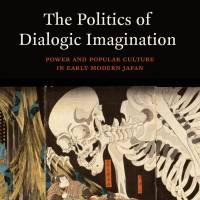"The Politics Of Dialogic Imagination: Power and Popular Culture in Early Modern Japan" attempts to ascertain the relationship that existed between well-known cultural portrayals and the configuration of social order in the late Edo Period (1603-1867). It peels back the layers behind the political effects of a nascent popular culture at a time when the seemingly powerful Tokugawa clan tried to rein in what artists were doing in Edo (present-day Tokyo).
The Politics Of Dialogic Imagination, by Katsuya Hirano.
University of Chicago, Academic.
It appears to be a reasonably tough ask but Katsuya Hirano makes a fairly decent fist of it, uncovering a number of contradictory realities that had become widely discernible at the turn of the 18th century. Mixing pop and politics, it's sometimes hard to know what the use is. But Hirano successfully traces the impact art had on a country that was undergoing rapid and radical transformation — with no end in sight. The book also features several fascinating historic works of art from the period, including a weirdly grotesque woodblock print by Utagawa Kuniyoshi of legendary warrior Asahina that is comprised of semi-naked men.



